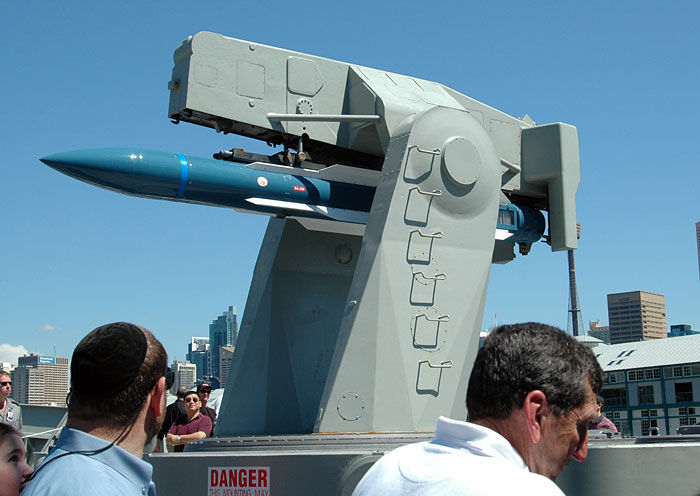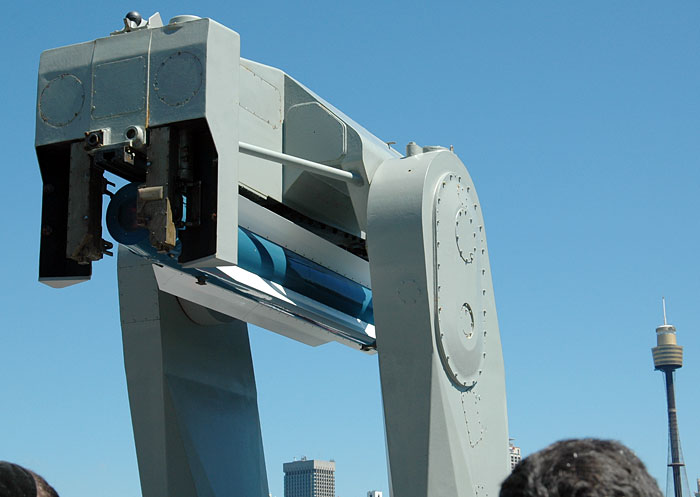|
Royal Australian Navy
Standard/Harpoon
Missile Launcher
|
 |
|
Standard/Harpoon Missile System |
text by
Charles Landrum
images by Brett Green

HyperScale is
proudly supported by Squadron.com
The Royal Australian Navy held an Open Day at Woolloomooloo on a
recent spectacular Sydney Spring Sunday.
Four ships were open for inspection with a variety of equipment
on display, including this Standard/Harpoon
missile system.
The launcher seen here carries the designation MK-13 GMLS (guided
missile launching system) in the US Navy and I believe it is the
same in the RAN. With a capacity of 40 rounds it can shoot either
the Standard Missile - medium range (no booster) or a Harpoon. The
missiles are stored vertically in two index rings (16 missiles in
the inner ring and 24 missiles in the outer ring) which rotate to
the load position with the missile selected. Any number of each can
be carried, but typically a test round is carried in one slot. The
missiles carry an electronic ID which is determined by a probe
mechanism. Firing data is downloaded to the missile via a multi pin
connector which momentarily penetrates a synthetic water proof
barrier. The magazine is reloaded via the launcher. It has a
reputation as a very reliable system.

The older SM-1 (MR) missiles have a 25nm range against air
targets and can be used in a surface to surface mode against other
ships (range limited by horizon). An engagement requires a dedicated
director which illuminates the target for the entire flight of the
missile. The SM-2 missile has a longer range (doubled) and depending
on the system employed does not need constant illumination of the
target , just in the terminal phase of flight.
The Harpoon is an anti-shipping weapon and has a range of 85nm
plus. It carries an active radar seeker and is fire and forget. The
targetting system which provides an initial firing solution and the
onboard seeker allow the missile to fly an indirect path to target
and has excellent discrimination features. The seeker head turns on
in the terminal phase of the engagement (like Exocet) in order to
"surprise" the victim. Harpoon II carries a GPS guidance system and
therefore has a capability against land targets.
Sadly the US Navy has inactivated the launchers on its frigates
as a cost cutting measure. We under-value the effectiveness of the
launcher and its associated fire control system in favor of the
AEGIS weapons system and the Vertical Launch System despite the good
reputation of this older system. As the author A.D. Baker III told
me, the "G" in the designation "FFG" in the US Navy no longer means
"guided missile" but "gelded".
Click the thumbnails below
to view larger images:
Model,
Images and Article Copyright © 2004 by
Brett Green
Page
Created 10 October 2004
Last updated
13 October 2004
Back to HyperScale Main
Page
Back to Features
Page
|
Home |
What's New |
Features |
Gallery |
Reviews |
Reference |
Forum |
Search